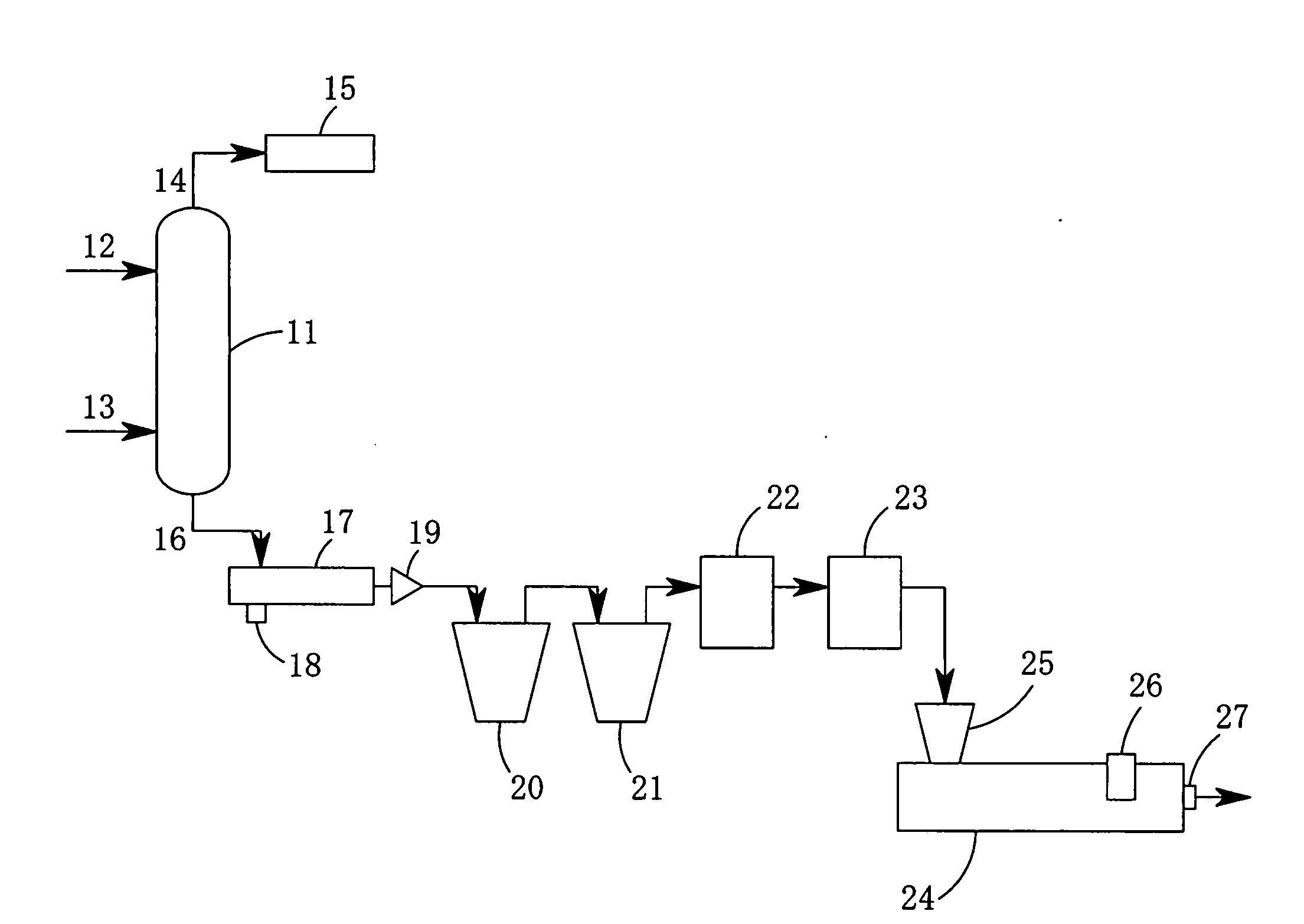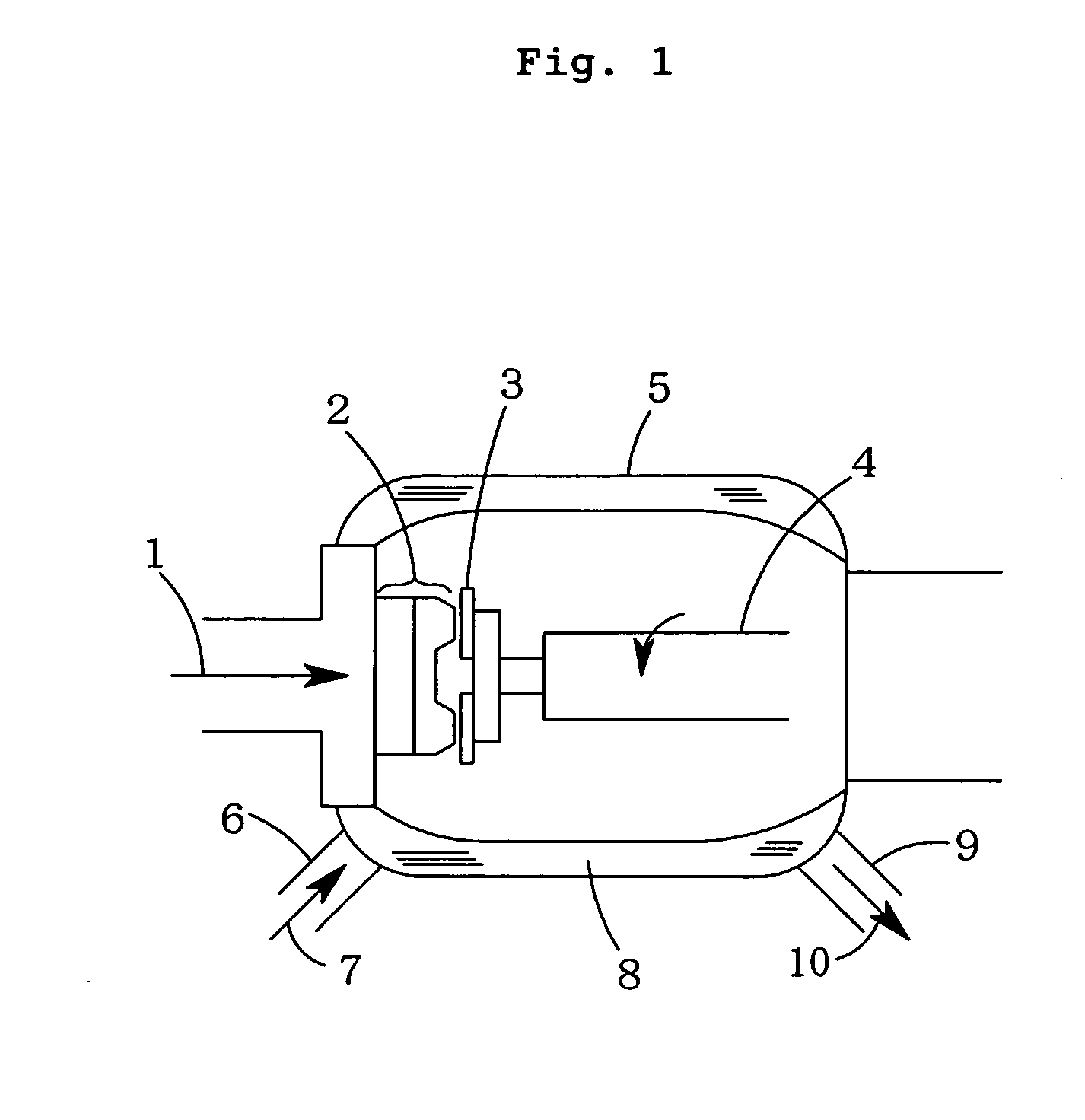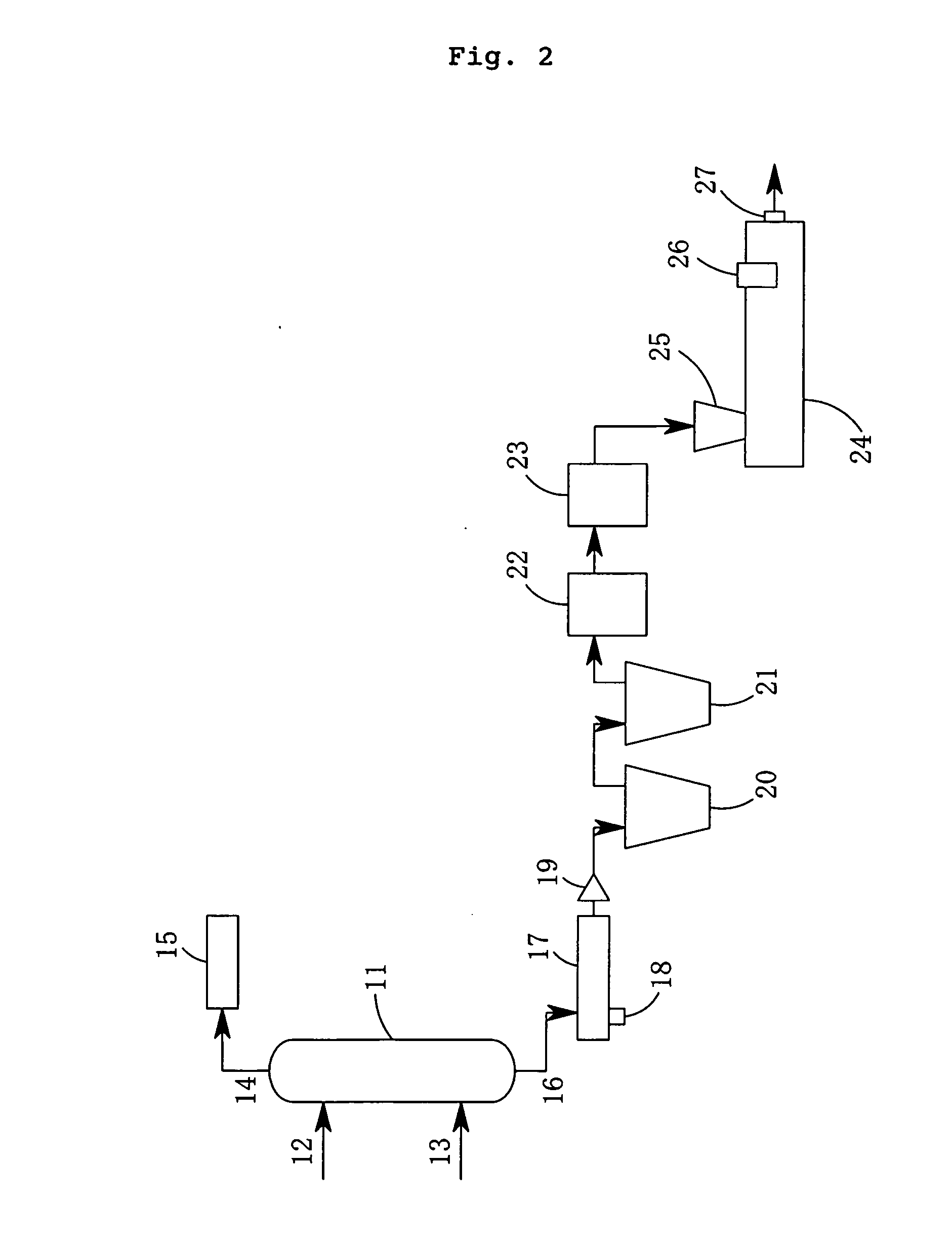Process for producing pellet of ethylene/vinyle alocohol copolymer
a technology of ethylenevinyl alcohol and ethylenevinyl alcohol, which is applied in the field of process for producing pellets of ethylenevinyl alcohol copolymer, can solve the problems of reduced production efficiency, longer drying time, and occasional volatilization of alcohol during precipitation, and achieves improved dispersibility of additives, convenient control, and efficient removal
- Summary
- Abstract
- Description
- Claims
- Application Information
AI Technical Summary
Benefits of technology
Problems solved by technology
Method used
Image
Examples
example 1
[0254]FIG. 2 schematically shows the steps. An EVOH solution containing 100 parts by weight of methanol, 50 parts by weight of water and 2 parts by weight of sodium acetate in terms of sodium with respect to 100 parts by weight of EVOH (intrinsic viscosity: 0.111 L / g) having an ethylene content of 32 mol % and a degree of saponification of 99.98 mol % or more (calculated by NMR method) was continuously supplied to the top plate of a plate tower 11 having a tower diameter of 0.3 m and a number of plates of 10 through an EVOH solution supply piping 12 at a rate of 52 kg / hr, and water vapor was blown into the bottom plate of the plate tower through a water vapor supply piping 13 at a rate of 86 kg / hr, and then the EVOH solution and water vapor were countercurrently contacted in the plate tower. The temperature in the tower was 130° C. and the pressure in the tower was 3 kg / cm2. Methanol vapor and water vapor were distilled out of the top of the plate tower through a gas emission piping...
example 2
[0273] Dry EVOH pellets were produced and evaluated in the same manner as Example 1 except for modifying the composition of a treatment solution containing carbon dioxide gas, in which hydrous pellets after washing were immersed, as shown in Table 1. The water content of pellets after drying in the step 3 was 4.5 weight % and the content of pellets after cutting in the step 5 was 0.12 weight %. Table 2 and Table 3 show the composition of the dry EVOH pellets and the evaluation thereof, respectively.
example 3
[0274] Dry EVOH pellets were produced and evaluated in the same manner as Example 1 except for modifying the composition of a treatment solution containing carbon dioxide gas, in which hydrous pellets after washing were immersed, as shown in Table 1 and modifying the drying conditions before pelletizing by a twin screw extruder into the drying by a still-standing type hot-air dryer 22 (“SP-100 type hot-air dryer”, manufactured by ASAHI KAGAKU CO., LTD.) at a temperature of 65° C. for 1 hour and subsequently the drying by a still-standing type hot-air dryer 23 (“SPHH-401 type hot-air dryer”, manufactured by TABAI ESPEC CORP.) at a temperature of 80° C. for 1 hour and 40 minutes. The water content of pellets after drying in the step 3 was 0.6 weight % and the water content of pellets after cutting in the step 5 was 0.14 weight %. Table 2 and Table 3 show the composition of the dry EVOH pellets and the evaluation thereof, respectively.
PUM
| Property | Measurement | Unit |
|---|---|---|
| temperature | aaaaa | aaaaa |
| temperature | aaaaa | aaaaa |
| boiling point | aaaaa | aaaaa |
Abstract
Description
Claims
Application Information
 Login to View More
Login to View More - R&D
- Intellectual Property
- Life Sciences
- Materials
- Tech Scout
- Unparalleled Data Quality
- Higher Quality Content
- 60% Fewer Hallucinations
Browse by: Latest US Patents, China's latest patents, Technical Efficacy Thesaurus, Application Domain, Technology Topic, Popular Technical Reports.
© 2025 PatSnap. All rights reserved.Legal|Privacy policy|Modern Slavery Act Transparency Statement|Sitemap|About US| Contact US: help@patsnap.com



